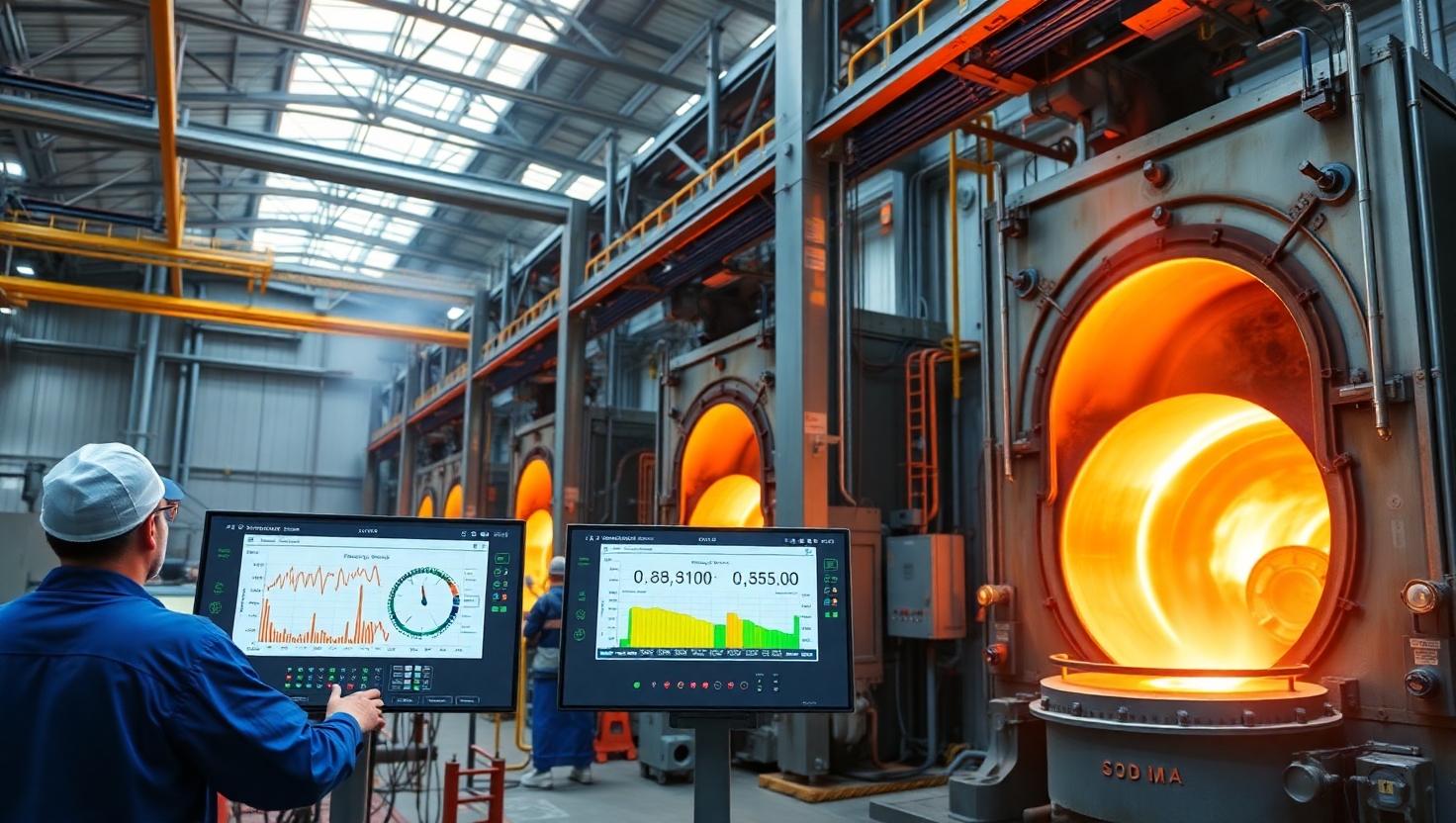Is AI Effective for Real-Time Temperature Control in Aluminium Casting?
Published by: ALUTimes | Date: July 18, 2025
Table of Contents
- Introduction
- Why Temperature Control is Critical
- Traditional Challenges in Casting
- How AI Enables Temperature Monitoring
- Sensor and IoT Technology
- Benefits of AI-Based Temperature Control
- Real-World Case Study
- Future of AI in Casting
- Conclusion
- Disclaimer
Introduction
Temperature consistency is vital in aluminium casting, affecting the final product’s grain structure, strength, and surface quality. Variations, even of a few degrees, can cause casting defects or downtime. In recent years, artificial intelligence (AI) has emerged as a powerful tool to address these challenges using real-time data, machine learning, and automation.
Why Temperature Control is Critical
Aluminium melts at approximately 660°C, but optimal casting temperatures can range between 680°C to 730°C depending on the alloy. Consistency within this range ensures smooth mold filling, minimizes porosity, and supports uniform microstructures. Improper temperature control results in scrap, rework, or compromised mechanical performance.
Traditional Challenges in Casting
- Manual monitoring: Human error and slower reaction times
- Delayed feedback: Thermocouple data often logged after-the-fact
- Variable conditions: Environmental changes affect temperature uniformity
- Inconsistent alloy properties: Alloys behave differently under heat
How AI Enables Temperature Monitoring
AI systems use predictive analytics to continuously analyze sensor data and adjust furnace or mold parameters in real time. The approach includes:
- Deploying IoT temperature sensors throughout casting stations
- Training machine learning models on historical and live data
- Triggering alerts or automated adjustments for overheating or cooling
- Using digital twins to simulate process variations and optimize setpoints
Sensor and IoT Technology
Non-contact infrared thermometers, embedded thermocouples, and real-time telemetry are used for AI-based monitoring. These devices are:
- Connected to edge devices or cloud platforms
- Powered by AI inference engines to process data instantly
- Integrated into SCADA and MES for plant-wide visibility
Benefits of AI-Based Temperature Control
- Reduced casting defects by up to 30%
- Lower energy costs via intelligent heating cycles
- Improved alloy consistency and casting repeatability
- Minimized human intervention and labor
- Predictive alerts prevent downtime and equipment failure
Real-World Case Study
A leading aluminium die casting facility in Gujarat implemented an AI-powered casting system integrated with edge analytics. Within 3 months, they reported:
- 15% reduction in energy use during smelting
- 40% improvement in casting yield
- Fewer shutdowns due to real-time thermal regulation
Future of AI in Casting
As edge computing and AI chips become more affordable, their adoption in aluminium foundries will increase. Combined with 5G and real-time analytics, future plants may achieve lights-out casting lines where AI regulates every stage of heating, pouring, and solidification.
Conclusion
AI proves highly effective for temperature control in aluminium casting. It reduces human error, optimizes energy use, and enhances product quality. Forward-looking plants should consider integrating AI-driven systems to remain competitive in efficiency, sustainability, and quality assurance.
Disclaimer
This content is for informational purposes. Consult automation and AI providers for implementation-specific guidance tailored to your foundry’s operations.

